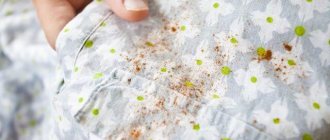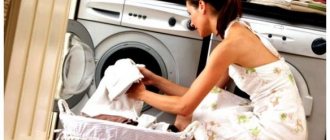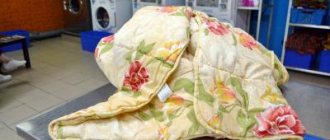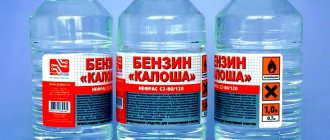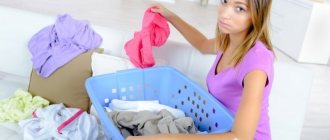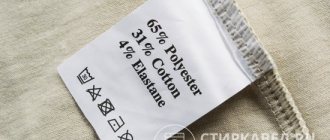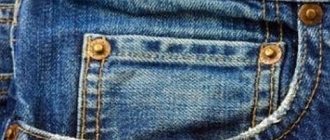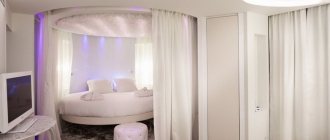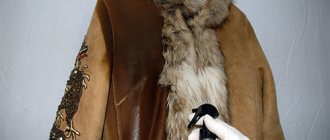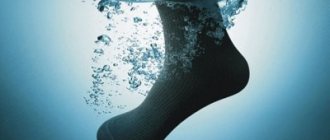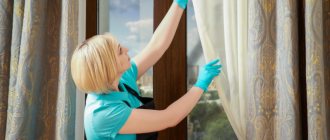Antistatic is designed to remove electrostatic charges from surfaces and clothing. Available in the form of sprays, pastes and conditioners. Aerosols are sprayed directly onto clothing. The most recognizable manufacturers: Bagi, Chirton, Cotico, Lana, Lira. Pastes and conditioners are used for manual or automatic washing. The best detergents for rinsing are Vernel, Lenor, Lion Soflan, Softa, Minel.
As an antistatic agent, in addition to commercial products, use a solution of vinegar, baking soda, air conditioner, table salt and lemon. Use hairspray instead of spray. Treat the inside of the skirt with a bar of soap. Home remedies don't last long on fabric, but they are just as effective as commercial sprays and lotions.
To avoid using antistatic agents, remove electricity with metal hangers, pins, and rubber soles. Maintaining humidity in the room, since dry air contributes to the formation of electrostatic charges.
Receiving static electricity is unpleasant. The most common static electricity comes from wool and plastic. A homemade or commercial antistatic solution may help. Let's figure out what it is and how it can be replaced.
What is it used for?
An antistatic agent is a product based on:
- alcohols,
- silicone,
- surfactant,
- other active ingredients.
The main purpose of its use is to prevent the accumulation of electrical discharges on the fabric , so that after such treatment it stops “beating with current”.
Not only are electrified items unpleasant to wear, they quickly take on a sloppy appearance even after thorough cleaning.
They stick to:
- villi,
- hairs,
- dust particles.
Antistatic agents are the solution to all these problems.
Kinds
There are several types of antistatic agents that can be used to treat clothing:
Alcohol sprays .
They are presented in cans that contain ethyl alcohol and other auxiliary components (propane, isobutane, fragrance). Sprays are used after washing, treating electrified items with it. The aerosol not only eliminates static electricity from clothes, but also makes the fabrics soft.However, a significant disadvantage of such products is the unpleasant odor that remains on things for some time.
- Water sprays . They contain: silicone, demineralized water, preservatives and other auxiliary components. Such compositions do not have a pronounced odor and rarely cause allergies. Use them after washing things.
- Conditioners (liquid gels). It is these antistatic agents that are used when washing electrified items.
In addition to eliminating static electricity, such products can solve a number of other problems, namely: making fabrics soft, making them easier to iron, and maintaining color saturation. The working components of antistatic air conditioners are surfactants and silicones, under the influence of which a thin film is formed on things. Charges roll along it without settling on the fibers. - Cream paste . Such compositions are used as rinsing aids for fabrics after the main wash. They are added to water, stirred, and electrified items are immersed in them for several minutes.
All types of antistatic agents are effective for eliminating static electricity from fabrics such as nylon, nylon, acrylic, lavsan, and faux fur.
What is antistatic
Most often, an antistatic agent is used for clothing made of synthetic fabric in order to prevent the electrification of things, which, in turn, will help prevent the fabric from sticking to the body and make it possible to feel comfortable. The antistatic itself is a combination of chemical elements, such as:
- ethanol;
- butane or propane in the form of a mixture;
- glycerol;
- flavoring
The result is a spray that you can buy in a store or make an antistatic agent yourself, which, in principle, is quite simple.
Rules of use for processing clothing
Antistatic agents should be used when washing in accordance with the recommendations given by the manufacturer. Depending on the brand, the dosage of the conditioner will vary.
Universal instructions for using antistatic agents for washing in an automatic washing machine:
place items in the drum of the washing machine;- select the desired program;
- pour the gel into a special compartment - most often it is marked with a “flower” or “star” icon;
- start the wash cycle.
Antistatic agent can be used for washing in both hot and cold water.
If manual processing of fabrics is required, then the product is added after its completion . The product is dissolved in water, the item is dipped into it, soaked for 5 minutes, then rinsed thoroughly.
Main varieties
There are many types of antistatic agents on the world market. Typically, they are divided into three main types:
- In the form of an aerosol (spray). Fast-acting, but unpleasant in smell. It is not recommended to use indoors; it is better to do the procedure on the balcony. Apply to the inside of things and leave for 20 minutes. After this, you can wear the treated clothing.
- In the form of a paste. Due to the high content of flavorings, it has a pleasant smell. It is used by rinsing clothes with a small amount of paste, after which the items must be dried and ironed on both sides. It can also be used as a spray for carpets and rugs by mixing a tablespoon of paste with water and spraying from a spray bottle.
- In the form of a mouthwash. It has a pleasant aroma and is used when washing in a machine by adding a small amount of liquid to the softener compartment. It is recommended to iron items after washing and drying.
Sometimes such chemistry can cause allergies. In these cases, it is worth taking care of what can replace the antistatic agent for clothing. Analogs are easy to make at home yourself, spending very little time.
What to replace it with?
Household antistatic agents can be replaced with improvised means. It turns out that many substances that everyone has in their home have the ability to remove static electricity.
They need to be added to the water at the rinsing stage after the main wash:
- Vinegar. To prepare the solution you will need 1 tbsp. l. vinegar 9% and 1 liter of water. Such a home air conditioner will not only save things from electricity, but will also help to better rinse out any remaining detergent.
- Hair conditioner + vinegar 9% + water (proportions 2:3:6) . All components are mixed and poured into rinse water.
- Salt: up to 3 tbsp. l. for 5 liters of water.
- Lemon acid . For every 10 liters of water, take 2.5 tbsp. l.
If you need to urgently remove static electricity from an item, you can use hairspray. It is applied to the wrong side of the fabric in a small amount.
Urgent measures
If you did not stock up on the product in advance, and the situation with magnetization of hair or fabric took you by surprise at home or in another place, use those products that are always nearby and which can replace antistatic agents for clothes:
- plain water - wet your hands and run them through your hair or clothes;
- lubricate your feet with cream - any cream suitable for hands, face;
- if there is a bar of soap in the bathroom, lightly run it over your tights or the lining of your skirt.
And in order to reduce the amount of static electricity at home, choose and regularly use a humidifier with an ionizer. It will also have a beneficial effect on your personal well-being.
How to choose the best?
Before purchasing an antistatic agent for washing, you need to pay attention to the following points:
Compound. An antistatic agent may contain: surfactants, silicones, alcohols, acids, glycerin.
The fewer aggressive components on this list, the better. Be sure to pay attention to fragrances and fragrances. Many people prefer products that do not give off an extraneous odor.- Method of use . Conditioners are added to the washing machine immediately during washing. Things are treated with sprays and aerosols after completion.
- Secondary functions . In addition to removing static electricity, many antistatic agents have an additional effect on the fabric: they whiten or preserve the color of things, making them softer.
- What products will it be used for? There are products intended only for caring for children's things.
They contain a reduced level of surfactants and contain a minimum of fragrances, which reduces the risk of developing allergies. Children's products should not contain components such as: A-terpineol (affects the nervous system), ethanol (impairs brain function), benzyl alcohol (can cause nausea and dizziness), linalool (impairs coordination of movements). - Price. The price depends on the manufacturer of the antistatic agent. Eco-friendly products are more expensive than conventional ones.
Top 3 popular remedies
The most popular antistatic agents for washing that are in demand among consumers:
Lenor Scandinavian spring
This is an inexpensive fabric softener that has the ability to remove static electricity. This gel can only be used to care for adult clothing.
It contains:
- cationic surfactants,
- aldehyde,
- flavorings,
- linalool.
For highly electrified fabrics, you will need 140 ml of antistatic agent for every 5 kg of laundry (1 measuring cup + 1/3 cup). For ordinary things, 110 ml (1 measuring cup) is enough.
For washing diapers and undershirts, choose Lenor for children, with an adapted composition. The cost of 1 liter is about 120 rubles .
Eared nanny
This product is intended for children's things :
- does not contain dyes,
- softens linen,
- contains Aloe vera,
- passed all the necessary dermatological tests,
- does not cause allergies.
For hand washing, 1 cap (45 ml) is required for every 10 liters of water. For machine washing, take 2 measuring caps (90 ml) for every 4-5 kg of laundry. The cost of 750 ml of the product is about 80 rubles .
Synergetic
This biodegradable laundry detergent with an antistatic effect has an environmental certificate of conformity of the Russian Federation.
It contains:
- structured water,
- silver ions,
- plant complexes,
- flavorings based on natural oils,
- food coloring.
For every 5 kg of laundry you will need 30 ml of conditioner, so 2.75 liters is enough for 90 washes. Its cost is 230 rubles .
Comparison table of characteristics
For a more objective assessment of antistatic agents, we have prepared a summary table combining all the characteristics of the described products:
| Name | Volume, ml | Purpose | date , days | A country | Price, rubles |
| Cotico WATERSPRAY | 200 ml 500 ml | For any fabrics and surfaces | 1095 days | Russia | 105-300 rubles 167-485 rubles |
| Lyra Neutral scent | 200 ml | For all types of fabrics | 545 days | Russia | 65-199 rubles |
| Chirton | 200 ml | For clothing, curtains, fabric covers, bed linen, polymer products, plastics | 730 days | Russia | 67-257 rubles |
| Bagi | 200 mo | For clothing made from any fabrics, interior fabric coverings and carpets | 1095 days | Israel | 284-331 rubles |
| Lion Elegant protection | 75 ml 160 ml | For all fabrics and natural fur | 1825 days | Japan/ Korea | 380-790 rubles 1010 rubles |
| Lana 3 in 1 | 180 ml | For carpets, dishes, fabrics, furniture, hair | 1095 days | Russia | 56-100 rubles |
| Kao Style Care | 200 ml | For clothes | 1095 days | Japan | 408-589 rubles |
Important Tips
Before you start washing clothes with an antistatic agent, you need to familiarize yourself with the following recommendations:
- Calculate the dose accurately. If you use antistatic in excess, things will not be rinsed. They will give off a specific smell, so wearing such clothes is not comfortable. If you pour too little antistatic into the machine, it will not have the desired effect.
- People suffering from allergies are recommended to use products designed for washing children's clothes.
- If the antistatic agent contains bleach, then it is not used for washing black clothes.
- To soften fabrics, you need to choose a product containing silicone.
- After machine washing using an antistatic agent, the item does not require additional treatment. After hand washing, clothes must be rinsed.
You will find maximum useful information about washing clothes and various fabric products here.
Features of using purchased products
They are produced in the form of sprays and rinses. The most convenient way to use an antistatic agent for clothing is in the form of a spray, but many of them have an unpleasant odor. Anti-electrification products are produced based on alcohol, glycerin, and water (safer). Here are the most effective:
- Lyra;
- Lana;
- Bugs;
- Chirton.
Fabric softeners with a pleasant aroma have a similar effect. Can be used for rinsing clothes in an automatic machine or after hand washing:
- Vernel;
- Lenor;
- Minel Flower Feeling;
- Eared Nanny;
- Meine Liebe.
Some antistatic agents often cause allergies, so many housewives make antistatic agents themselves.
